Review: 2017 Suzuki GSX250R (LAMS)
The Suzuki GSX250R is by no means the most powerful option available, but offers an exceptional entry point to motorcycling. Here's our test. Review & Images by Kris Hodgson and Jeff Ware
Suzuki have introduced the GSX250R to their LAMS line-up, offering a stylish sportsbike themed option in the 250-300cc category, that offers that larger 600cc look. We’re testing out the Triton Blue option which comes with the race inspired graphics, that for me at least would be the pick of the three, with the White a close second.
The GSX250R is a relatively simple offering, it’s a parallel-twin with a capacity of 248cc, rather than edging towards, or over, the 300cc capacity like many other manufacturers have done. There’s been a number of updates to improve the engine (see the Tech Talk below) and ensure it’s an ideal beginner’s option, and in that regard Suzuki are right on the money.
The GSX250R is compact, with a nice low seat height, easy reach to the ground and ‘pegs, and the clip-on style bars are quite close to your body, keeping you upright and centered on the bike. It’s one of those machines which surprised me at how close to the ground it is, when it came to putting a boot down. That means it won’t surprise learners who are still getting to grips with balance and managing the brakes, clutch and gears coming to a stop.

The GSX250R offers nakedbike ergonomics, a confidence inspiring CoG and enough performance for Australian roads.
It’s essentially a nakedbike with fairings, like most of the LAMS sports offerings, but that offers a more forgiving and neutral riding position. Add in basic but well support suspension front and rear – for my 70kg riding weight at least – and you have a relaxed but responsive machine that’ll easily take corners at speed with minimal body language and a simple focus on your chosen line/corner exit point.
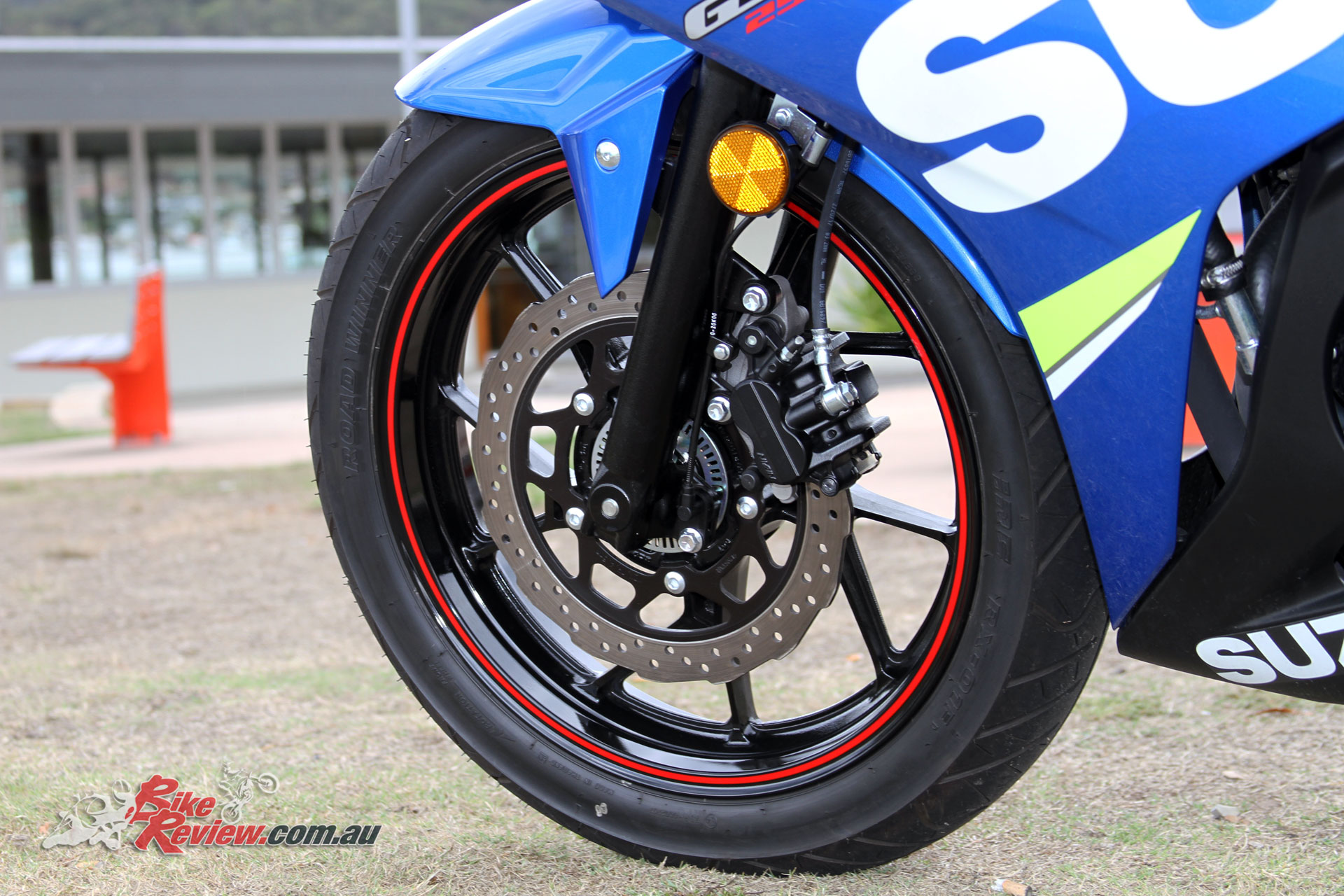
Forks and brakes are basic, but adequate for the job, especially for my 70kg weight and riding style
The clutch action is light and smooth, with a slick gearbox offering positive shifts. Apart from first to second shifts you can easily and effortlessly clutchless shift by loading the shifter and rolling off the throttle slightly. You can do it between first and second too, but I wouldn’t recommend making a habit of it.
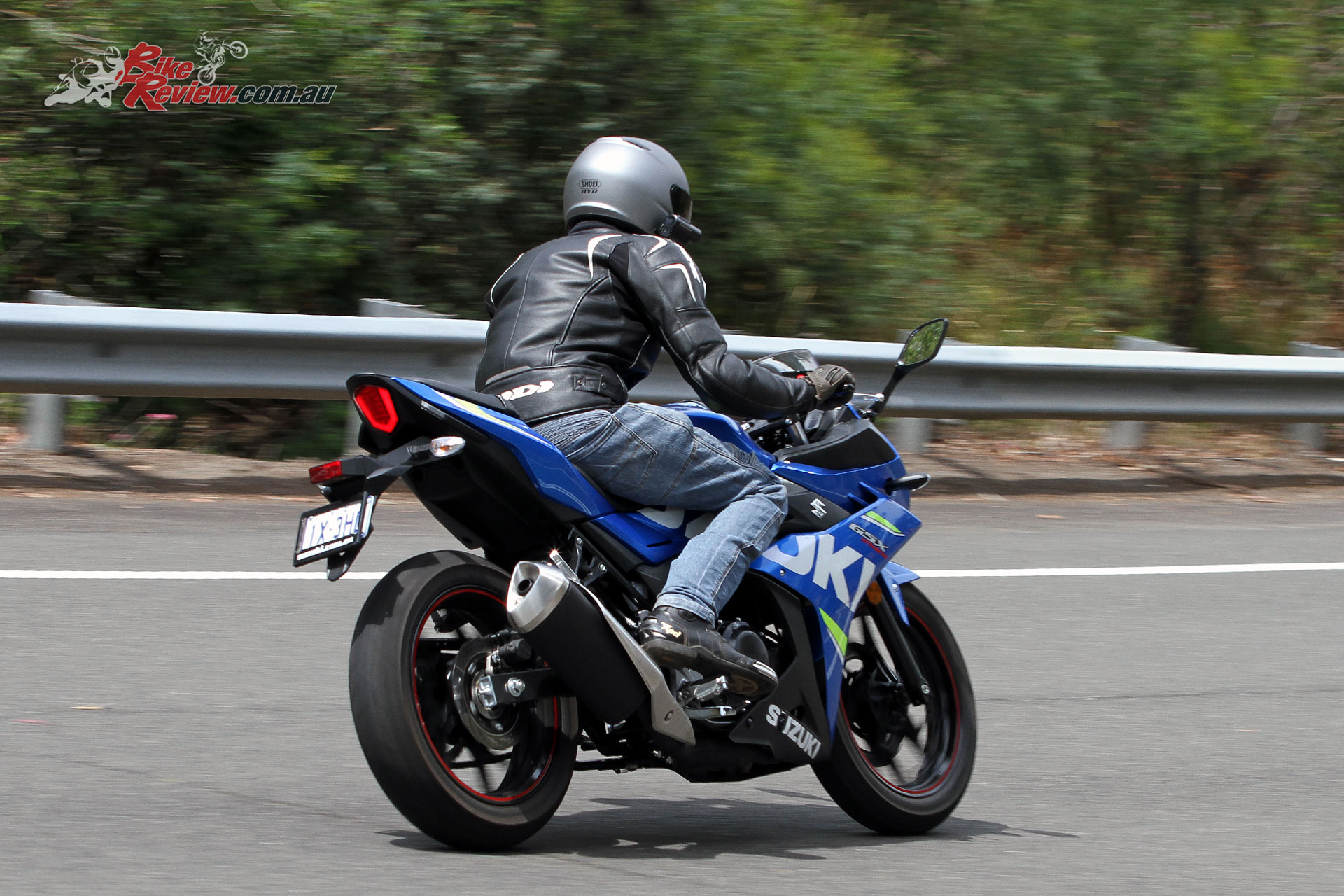
A smooth gearbox provides easy access to the 24hp on offer with good straight line stability on the freeway
First gear is short, but smooth and there’s nothing going on to really stress a beginner. Sure I hit the rev limiter a few times (sorry Suzuki!) before I got into the habit of shifting up to second sooner, but rapid take offs are just a matter of good gear management and 100 per cent throttle. The GSX250R actually revs up quickly, so making full use of that performance does require the full use of the rev range.
Power delivery is smooth overall, and there’s a nice mid-range, but even being aggressive on the throttle never unsettles the bike, grip or fueling. Sure there’s the occasional point on a constant throttle where the bike suddenly decides you’ve rolled off and engine braking cuts in, but fueling is solid except for these rare occurrences, which appeared in different gears at different parts of the rev range.
You’ll be active through the gears to make the most of the power on hand, which is just under 25hp and I found top speed in fifth was 123km/h, while sixth would roll out to about 140 indicated and getting very close to red-line. Sixth is more of a cruising/highway gear in this regard, and any steep hills will have you slowly washing off speed, at which point you’ll need to shift back into fifth when you reach about 120.
The engine does seem to be getting stronger after putting an addition 400-500km on the bike, although it could just be the tanks… well tank… of premium 95 fuel we’re filling the bike with, offering stronger up-hill performance on the freeway in the steep sections. The first 300+km took a 9.5L refill, and most of that was riding high in the revs.
Wheels are cool light weight 10-spoke items, with a single rotor front and rear, and Nissin calipers. The front is a two-piston item, with both backed up by ABS. It’s a relatively simple system, with quite a gentle bite, and all your braking power coming from really applying pressure on the lever.

The rear brake is a Nissin caliper on petal disc, but isn’t too strong or sensitive, making for an easy experience for learners. It also reduces the occurrence of unnecessary rear ABS activation that can plague bikes with more rear bite.
The rear brake is likewise pretty docile via the pedal, but the combination puts plenty of braking performance on hand to slow down, especially if you add some engine braking with more aggressive downshifts, without the bite or power that’ll easily brake traction and grip in slipper conditions. It’s ideal for new riders and enough for the more experienced.
Overall the GSX250R offers a great option for those who want a really slick looking machine, but one that is easily handled and won’t offer any of the wrong type of surprises. It’s more than capable of handling anything Australian roads could throw at it, and could just as easily be an everyday longer distance commuter. I was doing a 150km round trip commute and the fuel economy is just exceptional, and I could really make the most of this machine in all circumstances.

IRC tyres are good in the dry, but we didn’t have truly wet conditions to test them out in that situation
Plus the IRC tyres as standard fitment were really grippy in the dry, and retained good grip in the damp and light drizzle conditions I had during the testing period.
There’s also plenty of great features, like the LCD display with gear indicator, high beam flasher, hazard light toggle, adjustable brake lever, LED taillight and DRLs, and that all comes from the low price of $6,790 Ride-Away.
Now obviously this isn’t the most powerful LAMS option in this segment available, so if outright power and performance is what you’re after then look elsewhere, but for an ideal beginners machine or commuter, that’ll handle everyday duties with absolute confidence and style, it’s right on the money.
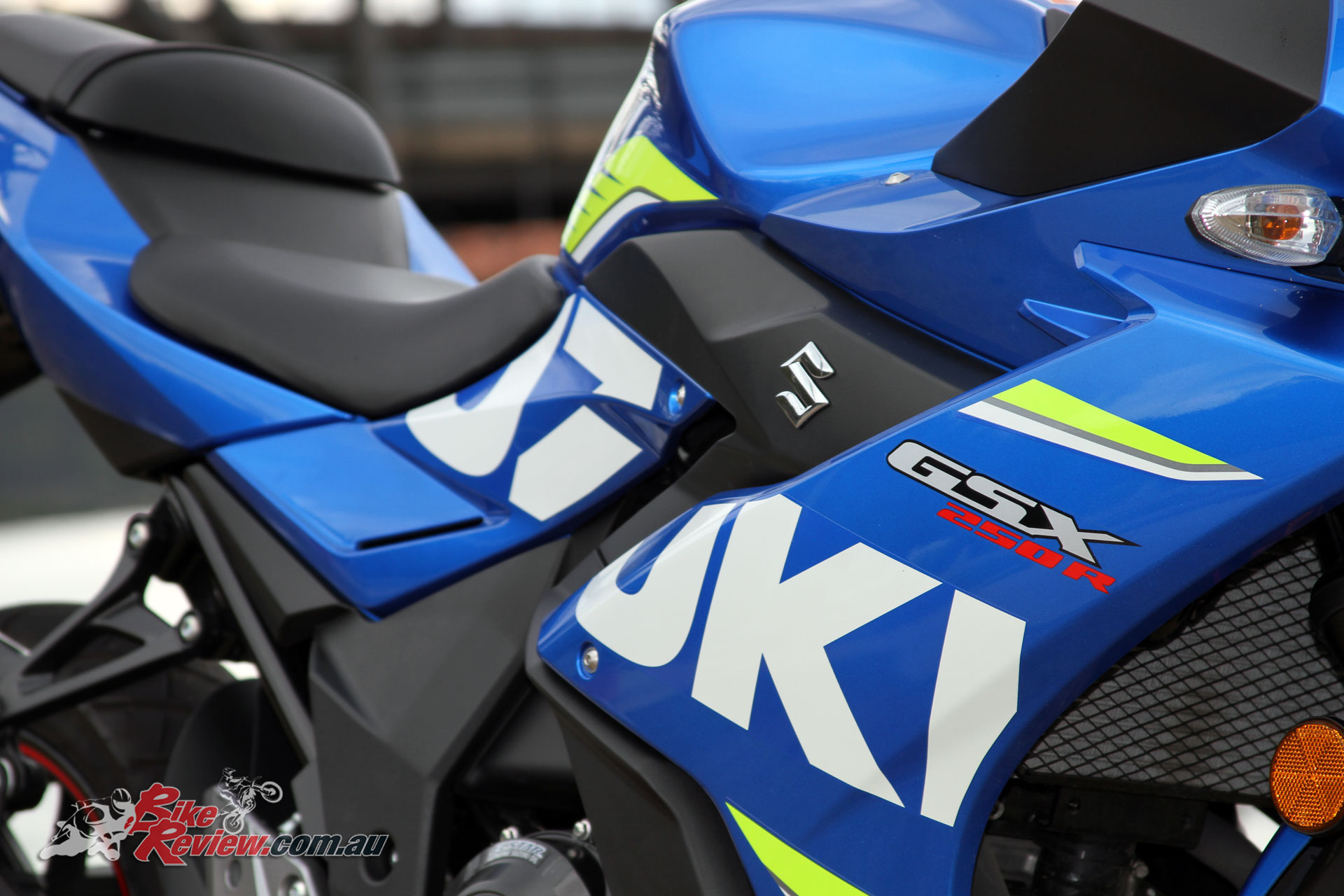
Suzuki’s GSX250R packs a lot of quality of life improvements, ensuring performance is accessible, smooth and found throughout the rev range, so you can make the most out of this machine
2017 Suzuki GSX250R Second Opinion
I know. Comparing this current 24hp LAMS 250 Suzuki to a learner legal 60hp 1990s Suzuki 250 is not exactly a fair comparison. However, as I fanged along on the 2017 GSX250R on the very same road I cut my teeth on (and my skin) as a pimply faced L plater in 1992 on my RGV250M, I can honestly say I was having, from what I can remember, just as much fun. The difference was I wasn’t terrified of being pitched into the rock wall thanks to a narrow powerband and crap 1990s tyres!
Back then, learner riders were in with a real chance of being pitched off their bikes due to power and had access to some properly fast machines, so fear was a real factor in honing skills. These days, the bikes are very easy to ride, leaving the learner to focus more on road craft and basic skills, with the flip side being they lose out on quite a lot of bike control skills… but more on that some other time.
Plenty of learner legal bikes these days are as boring as bat sh#t, trust us, we ride most f them, so when one comes along that is a bit of fun and looks cool, it really stands out. The GSX250R is one of those. Yes, I hear you! It’s only a 250! It should be a 300 or 400! I said the same thing to Suzuki Australia and they even agreed in a roundabout way.
But in all honesty, for a newbie rider, the 250 is plenty. And, as you can see in the video, the bike can still be punted along OK, fast enough for kneesliding anyway.
Firstly a quick walk around the GSX250R, at least for me in the colours we tested it, puts a smile on my face. It looks fantastic, like a baby GSX-R1000, which is how 250 sportsbikes should look – like the big brother. The finish is great, the dash looks awesome and overall the GSX250R gives the impression it is all about fun. It also has the big bike look, like a 600, at first glance.
Ergonomically the bike is more sports-touring/commuting than sports but this will suit the new rider. The ‘bars are comfy and wide and seating position upright. There is plenty of legroom and even for an 185cm rider like me and the GSX250R is really comfortable overall and the LCD dash is easy to read and looks the part.
I was really surprised at how torquey the parallel twin is. It is eager in the lower and mid range areas, particularly for a 250, and around town in there is plenty of torque on tap, even without using the gearbox heavily. In fact, up to 100km/h the GSX250R would give 300 to 400cc LAMS bikes a match.
It is only in the upper rpm that the 250 suffers, where power rapidly flattens out. Top speed is 141km/h head on tank, top gear, rev limiter… However, it is a really impressive engine for a 250 four-stroke learner bike and perfect for the new rider in an urban environment.
The little 250 handles well, with heavy, stable and quite conservative steering geometry ensuring no surprises for the new rider, yet allowing the ability to vary line into or mid corner should panic set in. the suspension, basic as it is, is good over a wide range of surfaces, even with my 90kg frame. The tyres are not so good, however, and I’d be investing in a pair of decent hoops immediately if I bought one.
The only area that I felt needed improving was the front brake, which faded after only a few corners of hard-ish braking. The brakes need some improvement, even for new riders, but this could be achieved with brake pad materials so is not a big issue or a deal breaker.
There are numerous choices of bikes in the $6000 – $7000 price range and the GSX250R is the smaller capacity bike in that range but don’t write it off based on engine size, get out to your Suzuki dealer and ride it as it is a really refined little machine and is something different too, with a stylish look and hey, it’s a GSX-R! – Jeff.
2017 Suzuki GSX250R Tech Talk
The GSX250R carries the distinction of not being a GSX-R or GSX-S model, and was designed for Asian markets where the 250cc segment is both popular but also often the top end of affordable consumer motorcycles due to capacity restrictions. It’s inclusion in the Australian line-up does however cover an existing hole, offering a mid capacity LAMS sportsbike option, above the nakedbike GSX-S125 and below the larger SV650 which sits at the premium end of their LAMS offerings.

The GSX250R powerplant is derived from the Inazuma 250 with slightly boosted power and torque, as well as new covers and a lightweight exhaust system.
The GSX250R features a 248cc parallel-twin, with a bore x stroke of 53.5 x 55.2mm and 11.5:1 compression ratio, and is Euro4 compliant. The cylinder head also adopts roller type rocker arms to minimise friction losses, and cam profiles are optimised for acceleration between 20-90km/h, along with a smooth ride, with minimal noise.
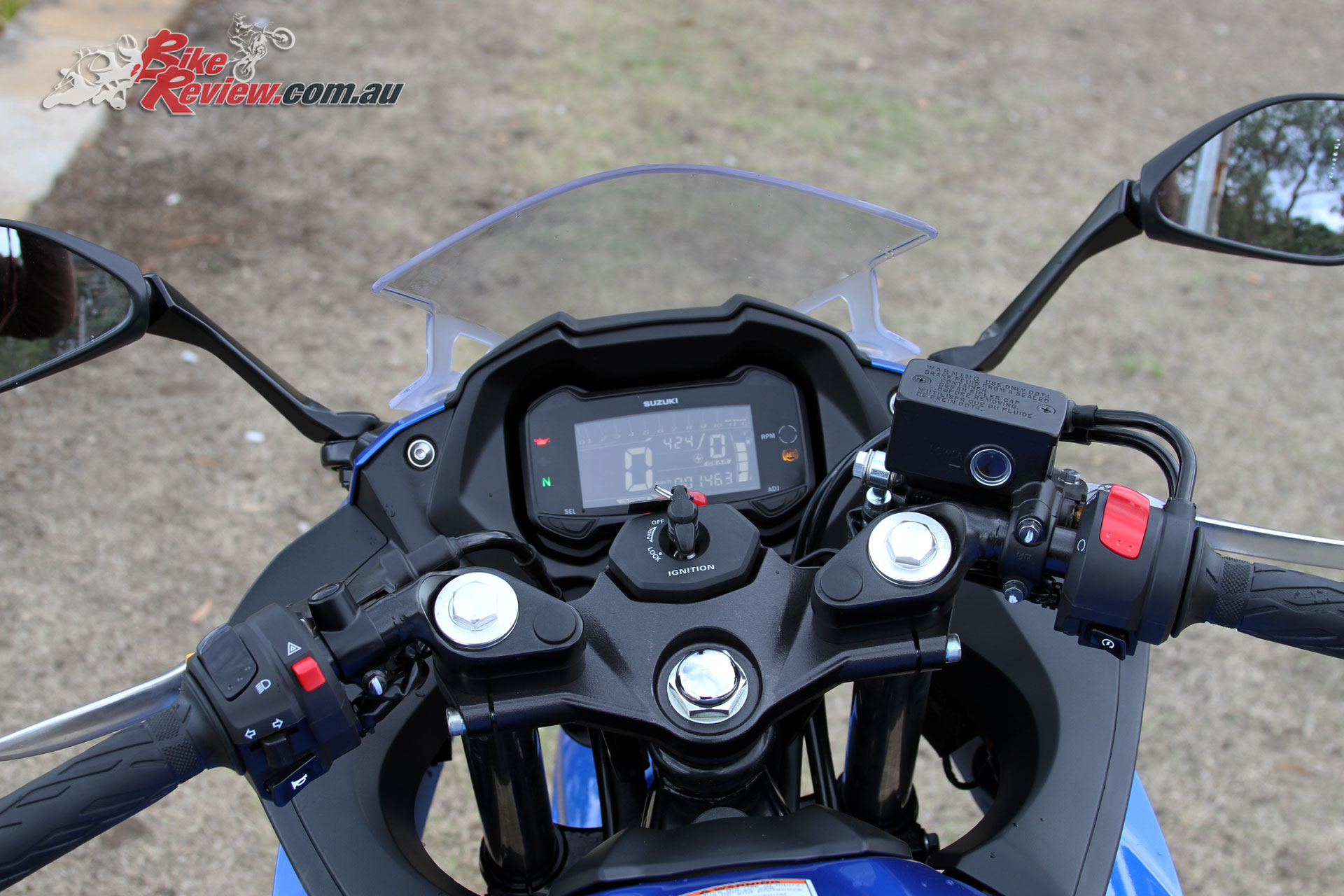
The GSX250R offers an LCD display with gear indicator and clearly visible indicator lights, while vision through the mirrors is good if not amazing
A new intake valve design has also been adopted for optimised airflow, with low tension piston rings and optimised piston ring grooves. Projected tip spark plugs also speed up combustion for ideal throttle response at partial openings, with the oil pump also designed to reduce friction loss and improve economy.
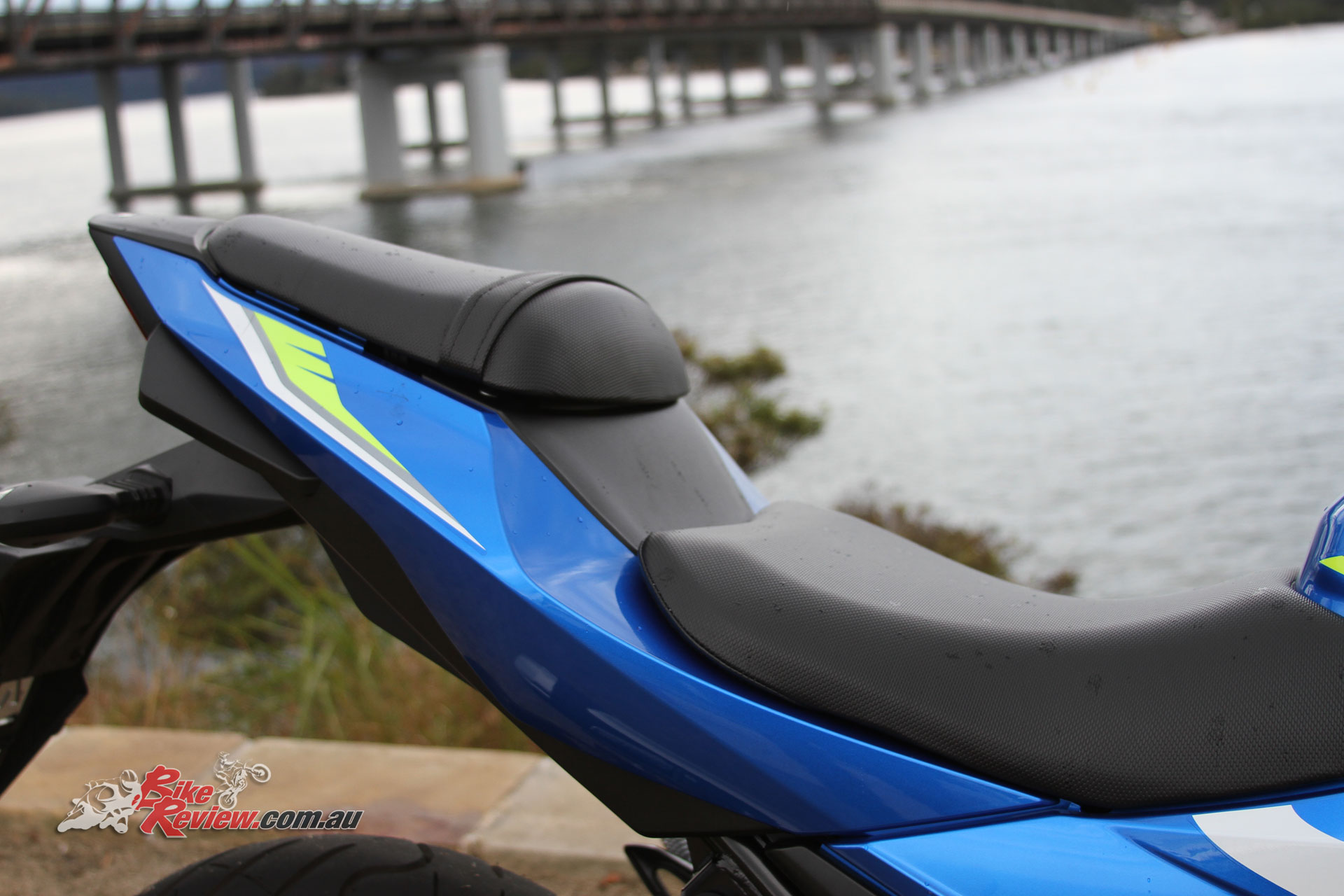
A low 790mm seat height feels very close to the ground with a compact seating position and reach to the ‘bars
Suspension is non-adjustable KYB forks with a KYB mono-shock with pre-load adjustability. Front controls are on clip-on handlebars, however the overall seating position is less aggressive, with a 790mm seat height.

The GSX250R features a standard halogen headlight with LED daytime running lights for extra visibility and offers an aggressive sportsbike aspect to the bike
Wheels are lightweight 10-spoke items, with a single front rotor and two-piston caliper, with the rear sporting a single-piston caliper. Both are backed up by ABS. A wheelbase of 1430mm, rake of 25.6 degrees and trail of 104mm offers nimble handlings with good highway and mid-corner stability.
A halogen headlight is joined by LED daytime running lights for visibility, with a LED taillight.
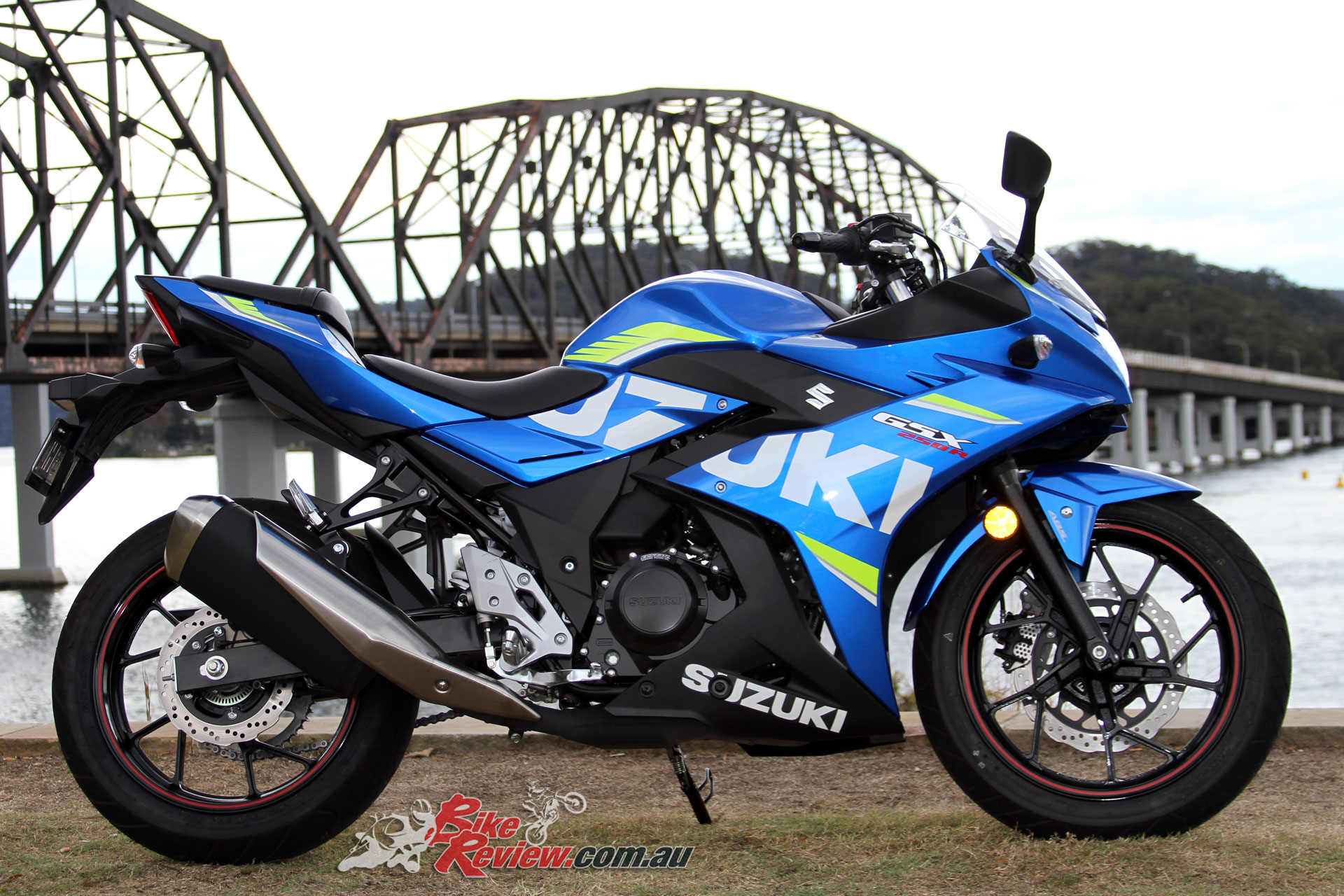
Overall the Suzuki GSX250R is an ideal beginners option or well mannered smaller capacity commuter for those not overly worried about performance
2017 Suzuki GSX250R (LAMS) Specifications
Price: From $6,790 Ride-Away ($5,790 + ORC)
Warranty: Two year, unlimited kilometre
Colours: Pearl Nebular Black, Pearl Glacier White No.2, Metallic Triton Blue No.2 (as tested)
Claimed power: 18.4kW[24.7hp]@8000rpm
Claimed torque: 23.4Nm[17.2ft-lbs]@6500rpm
Wet weight: 181kg
Fuel capacity: 15L
Engine: Liquid-cooled, four-stroke, SOHC, parallel-twin, 53.5 mm x 55.2 mm, 248cc, 11.5:1 compression ratio
Gearbox: Six-speed gearbox
Chassis: Semi double-cradle frame
Seat height: 790mm, Wheelbase: 1430mm
Rake: 25.6°, Trail: 104mm
Suspension: KYB telescopic forks, KYB mono-shock
Brakes: ABS, Single petal rotor front and rear, two-piston caliper front, single-piston caliper rear
Wheels & tyres: Ten-spoke wheels, IRC RX-01F/R tyres, 110/80 – 17, 140/55 – 17
Instruments: Multi-function reverse-lit LCD
2017 Suzuki GSX250R (LAMS) Gallery
The Verdict | Review: 2017 Suzuki GSX250R (LAMS)
Smooth operator
Suzuki’s GSX250R offers the ideal starting machine, with unassuming performance and super rider-friendly ergonomics.

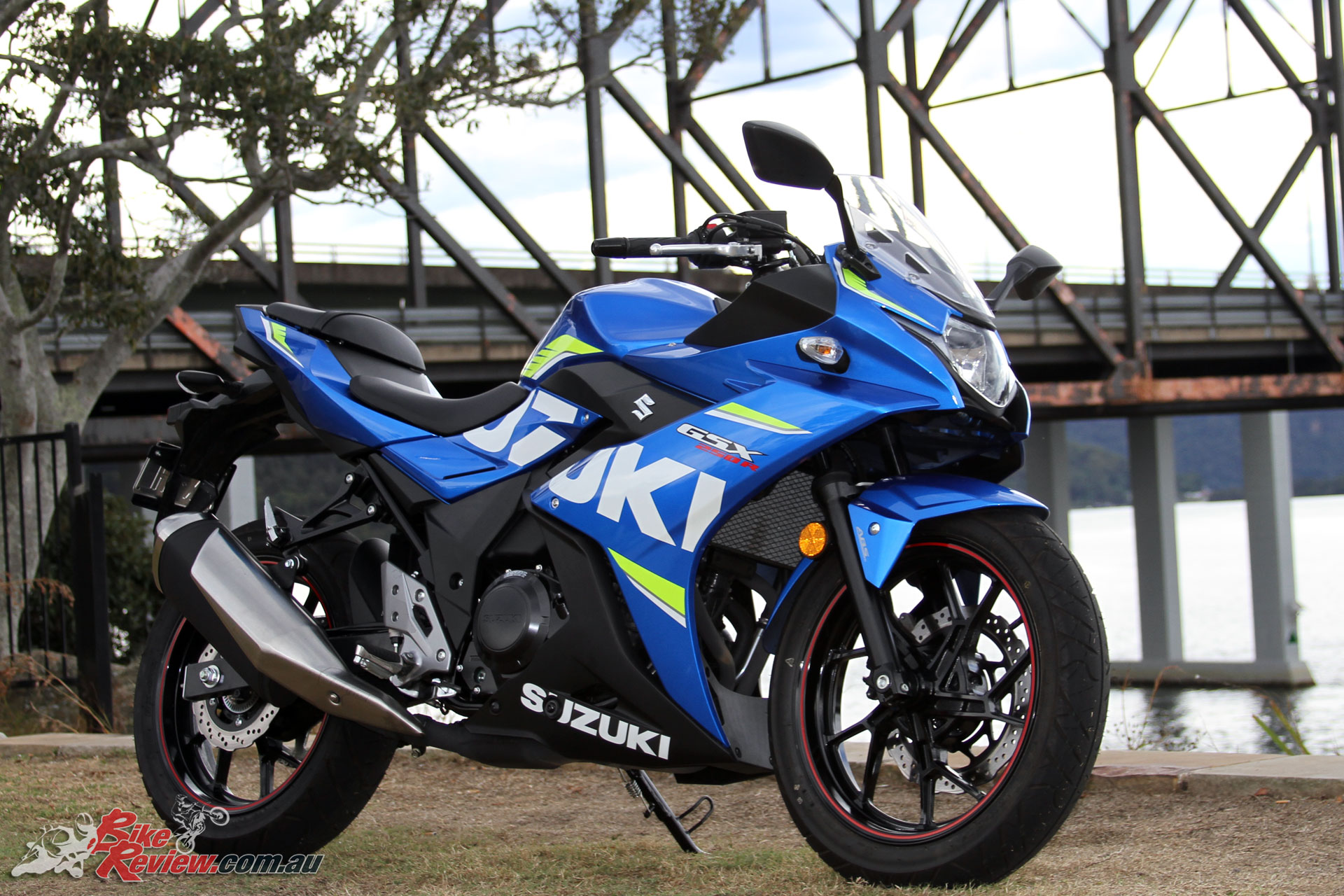




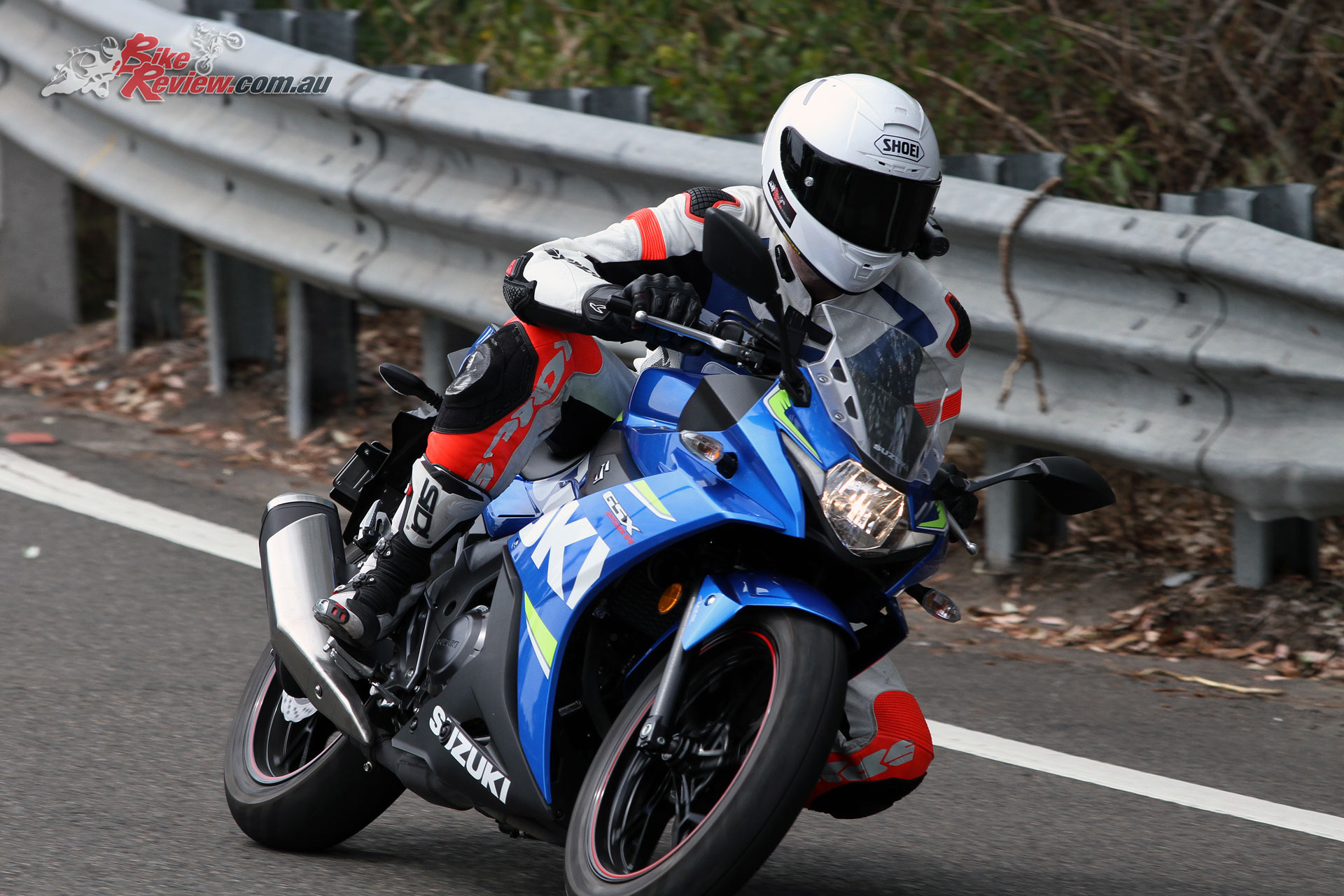
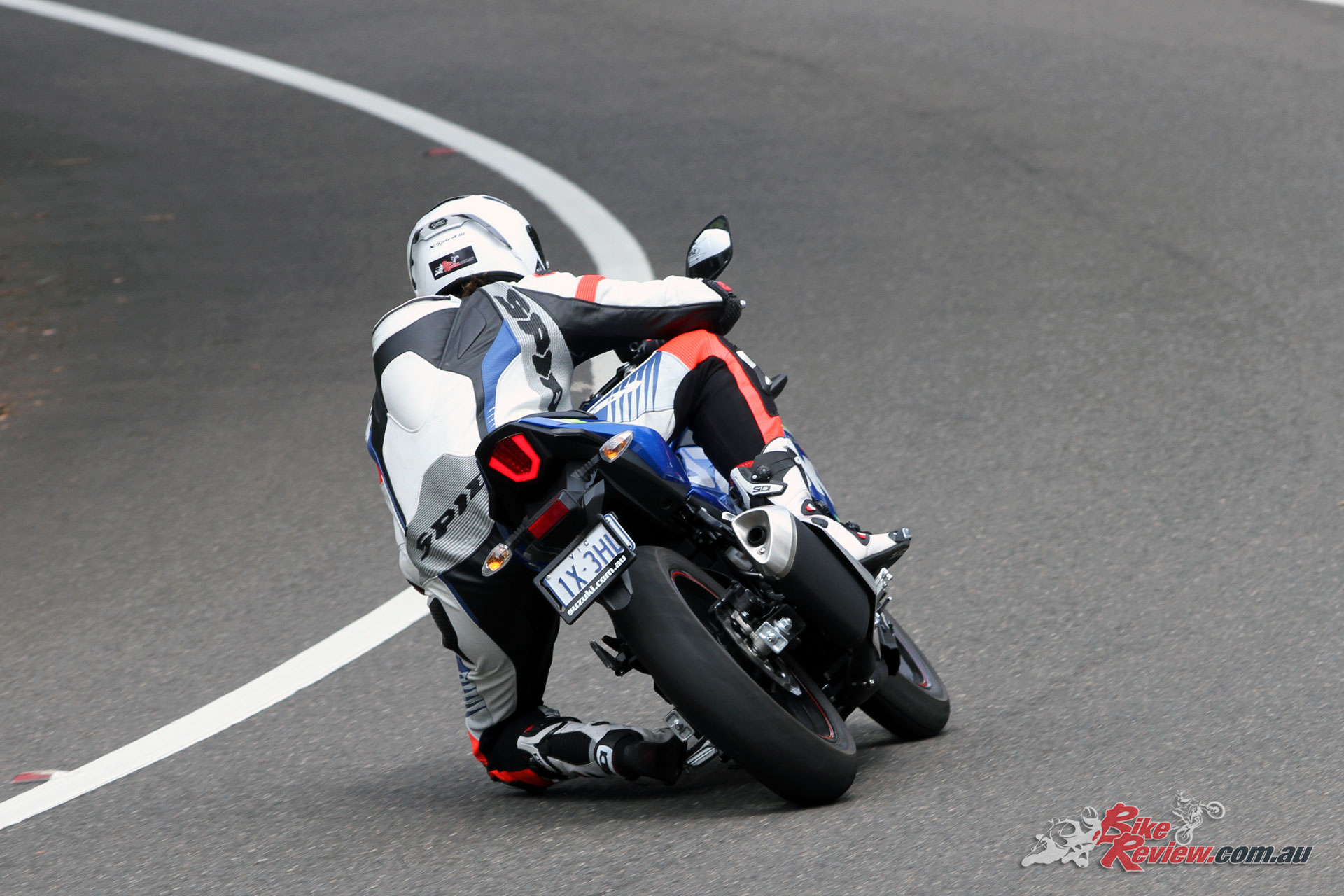
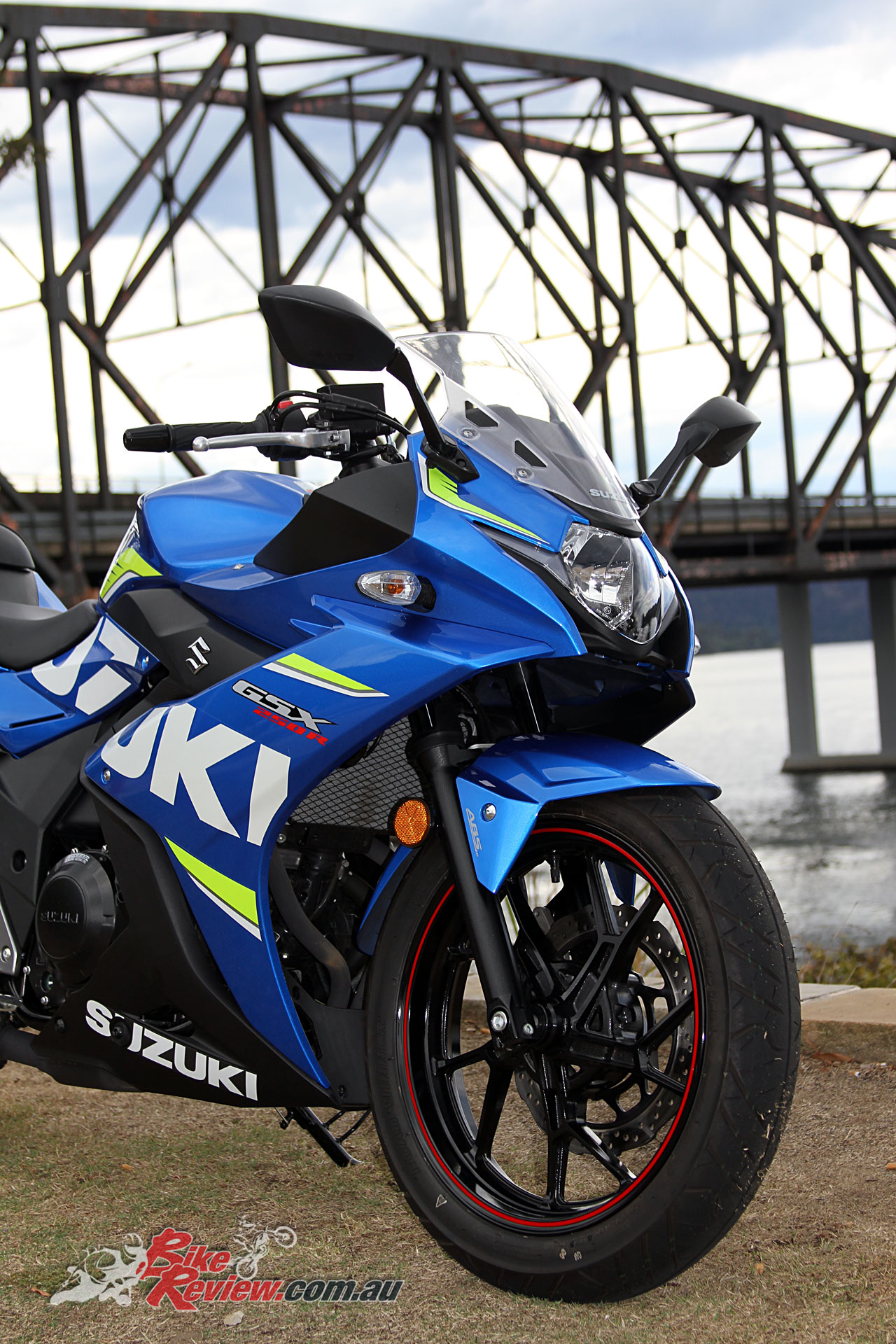
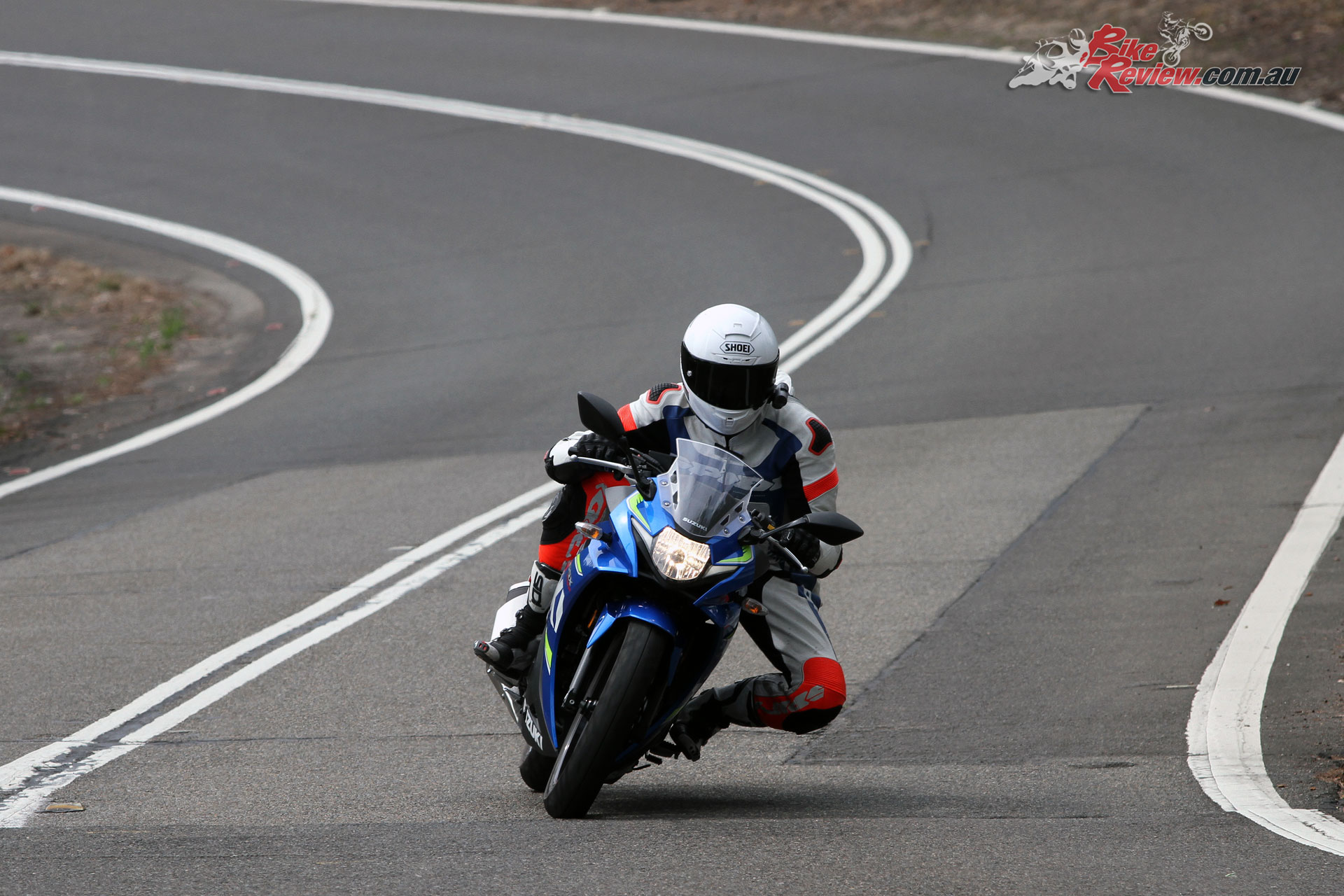

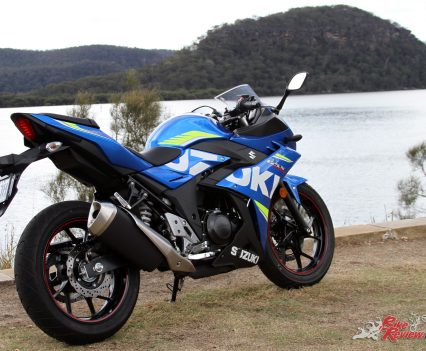

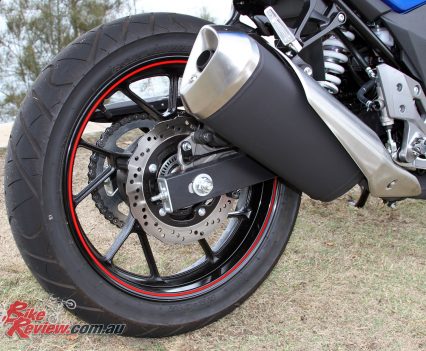
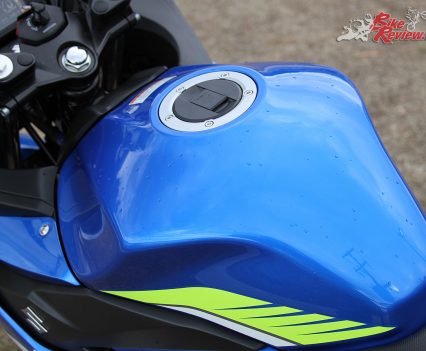
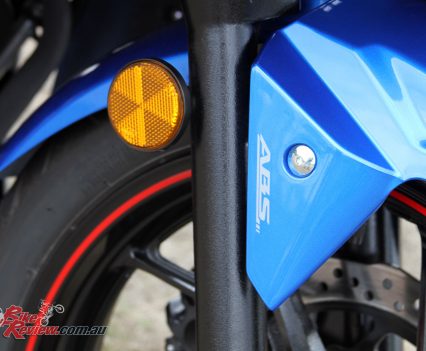


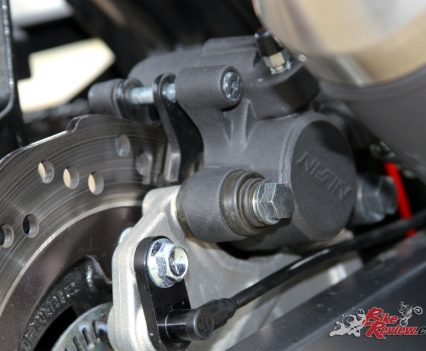

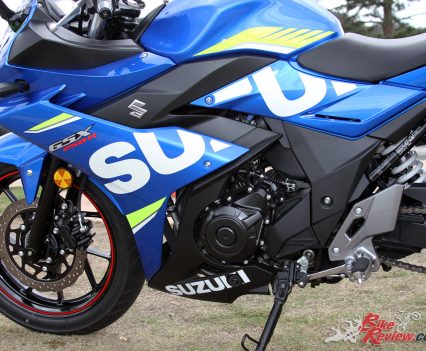
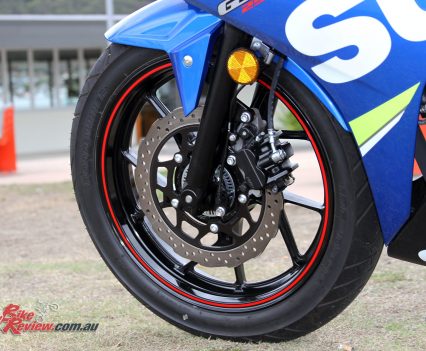
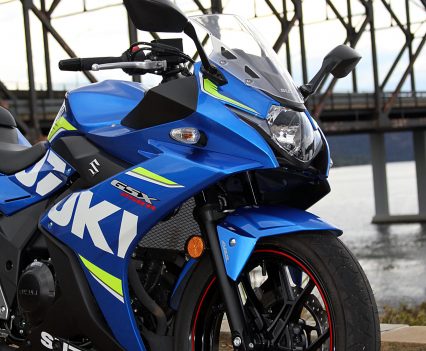
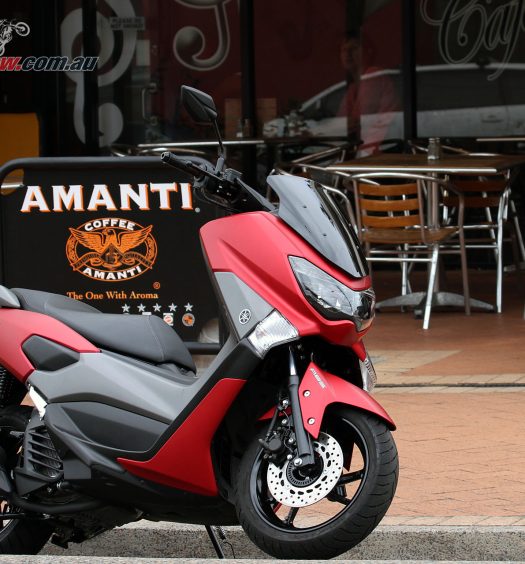









November 27, 2017
Thanks Kris. Great review. When I visited the showroom recently, I felt this was the heaviest of the LAMS bikes compared to the R3, CBR100 and Ninja300. Coming off a 10 year break in riding as well as some back issues, I felt that perhaps I need to stick to the others because of the weight issue.
November 27, 2017
Hey Calvin, I wouldn’t have thought there was much difference between those models, with the weights fully fueled pretty similar (probably 5-10kg variance between the GSX250R, Ninja 300 and R3 on paper, which can vary greatly by weight distribution, or a full/empty tank of fuel). The CBR300R may be a little lighter, but it’s also a thinner machine if you’re wrestling it around on foot, so it’d probably feel lighter on the showroom floor. Your height and leg to torso ratio also comes into it though, and can be a real factor with feeling comfortable on a machine.
If you’re a returning rider and want a bit more performance I’d probably suggest the R3 or holding out and seeing what the Ninja 400 is like if you’ve got the budget, as both offer a bit more performance to appreciate as an experienced rider (and the Ninja 300 prices will probably drop when it lands). The fact the GSX250R is quite wide can also make it feel heavier, but that gives it that neat 600cc look.
If you can try going on a test ride if you haven’t already, as they each have different characters. The R3 and Ninja are both a bit more aggressive, although not as extreme as a sportsbike, and you can work for the power delivery a bit more than the GSX250R as they are a bit peakier.
September 1, 2019
I realize this article is dated, and here I am in Oct 2018. I recently traded in a 2015 Yamaha R3 for a new 2018 Gsx250R. I’m 65 years aged, and have ridden for over 48 years in the US. This bike is perfect for how I ride. Nice and comfortable for a 200 mile ride on a combination of roads and speeds. It does nothing unexpected, and everything I want it to do. This truly is , in my opinion, the perfect commuter, and a true joy to ride.
September 13, 2019
Hi Steve, I have to agree – it is such a cool little bike. Comfy, handles well, light, surprising pull for a 250… an underrated bike for sure. Jeff .